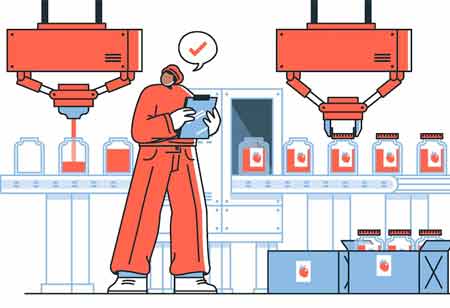Thank you for Subscribing to Food Business Review Weekly Brief
Innovative Technologies Solving Challenges in Food Packaging Industry
Innovative packaging provides real-time information about food quality and builds consumer confidence in the safety and freshness of the products.

By
Food Business Review | Wednesday, April 23, 2025
Stay ahead of the industry with exclusive feature stories on the top companies, expert insights and the latest news delivered straight to your inbox. Subscribe today.
-450x308_4imh.jpg)
FREMONT, CA: Food packaging is an important aspect of the global food supply chain, as it affects food safety, shelf life, sustainability, and consumer convenience. Traditional packaging has drawbacks, such as environmental impact, food waste, and quality compromise. New technologies are needed to create a sustainable, efficient, and safe food system. Contaminants, improper packaging, and inadequate sealing can compromise food safety.
Traditional packaging methods may not always provide the necessary barriers to protect against bacteria, oxygen, moisture, and other factors that can degrade food quality. Incorporating antimicrobial agents or oxygen absorbers into packaging materials helps extend the shelf life of products by reducing microbial growth and oxidation. Technologies like time-temperature indicators and freshness sensors allow consumers and retailers to monitor the condition of food products in real-time, ensuring that they are stored and consumed under optimal conditions. Single-use packaging, in particular, poses significant environmental challenges, as it often ends up as litter or in oceans, harming wildlife and ecosystems.
Innovations in packaging materials, such as biodegradable plastics, compostable films, and edible packaging, offer eco-friendly alternatives to traditional plastics. Using biodegradable and recyclable materials helps reduce the volume of packaging waste in landfills and the environment. Efficient packaging is crucial for optimizing supply chain logistics, reducing transportation costs, and minimizing food waste during transit. Traditional packaging methods may only sometimes be designed to withstand the rigors of transportation, leading to damaged products and increased waste. They seek packaging that is easy to open, resealable, and portion-controlled while being environmentally friendly.
Innovations in material science have led to the development of lightweight yet durable packaging that reduces the weight of shipments, lowering transportation costs and emissions. Lightweight packaging reduces fuel consumption and costs associated with transporting food products. Modern consumers are increasingly demanding convenience and sustainability in the products they purchase. Traditional packaging may only sometimes meet these expectations, leading to dissatisfaction and a shift in consumer preferences. Technologies that enable resealable packaging, portion control, and easy-to-open features address consumer needs for convenience while reducing food waste.
Packaging innovations emphasizing sustainability, such as using recycled materials or reduced packaging, align with consumer values and enhance brand loyalty. Packaging that meets consumer demands for convenience and sustainability can lead to higher customer satisfaction and brand loyalty. Resealable and portion-controlled packaging helps consumers reduce food waste by allowing them to use what they need and keep the rest fresh.






